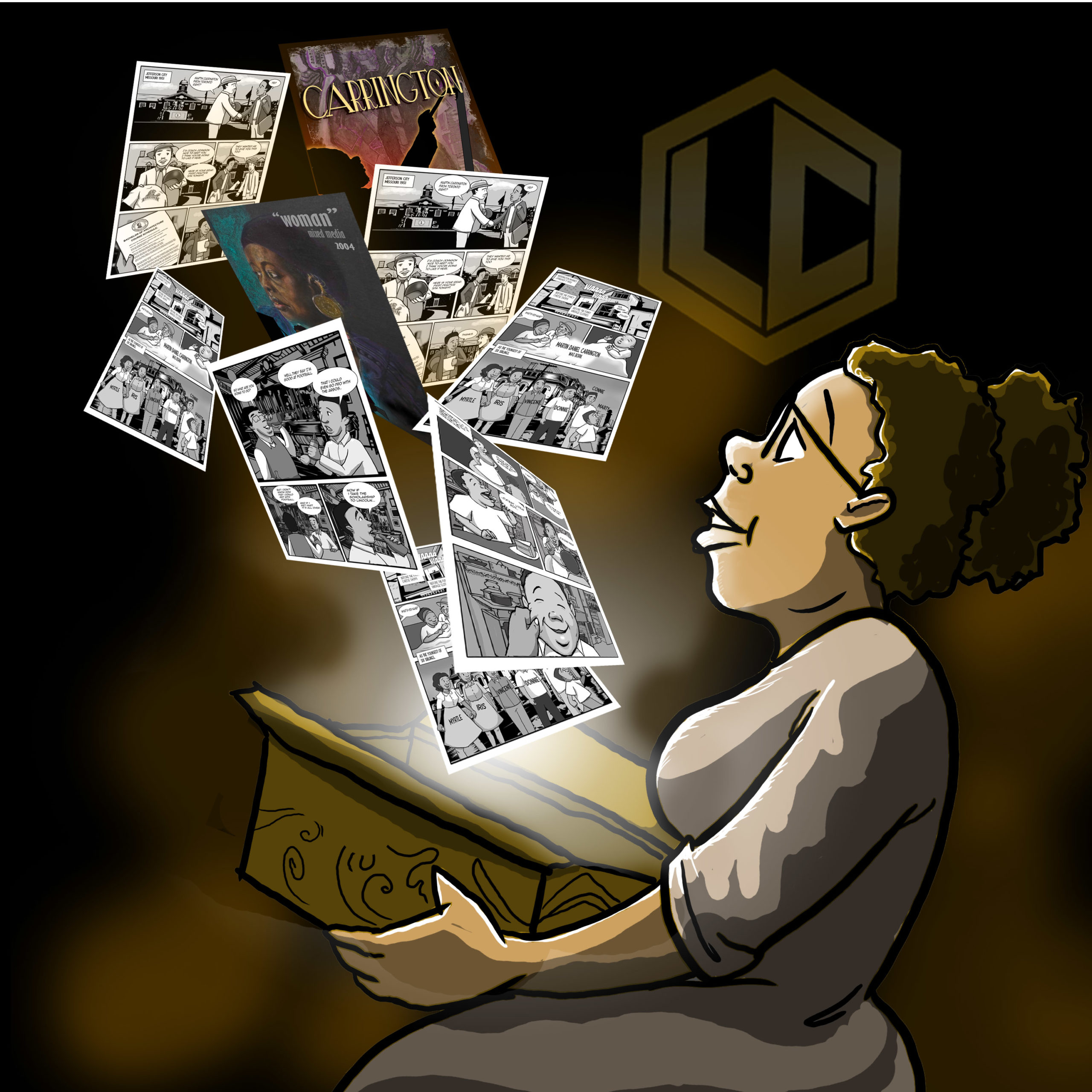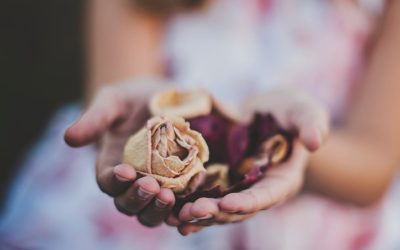When it comes to your legacy, how would you like to be remembered?
It’s an important question that everyone should consider. Because how we are memorialized and remembered by our loved ones matters. After all, everyone’s different. We’ll all leave behind a legacy and influence the lives of those we love, so our memorials should reflect that.
That’s what inspired Janine Carrington to create truly special memorials for families. We recently chatted with her about her memorial project, La Caja Comics.
La Caja Comics — Celebrating the Lives of Loved Ones In a Comic
Tell us a little about yourself
“I’m a Toronto-born artist who specializes in illustration. I was taught the basics of art by my father before going to study visual art at art high school and art college. After I finished college I worked for a bit in an office while writing and drawing my graphic novel series called “Everything is Wonderful.” I took a little time to travel and then started freelance illustration.
I’ve always loved making comics because they were the most accessible way for me as an artist to create a reality exactly the way I want it to be. Comics are a very powerful medium because they are so easy to understand. Although they take a very long time to produce and a very short time to consume, their ability to deliver a message is amazing.”
What got you interested in illustration and comic books initially?
“In terms of personalized comics, I made a comic about my mom for her seventieth birthday. After that, a neighbor suggested that it would be a good business idea. I tried it and it was a great success! I spent the next 10 years being a “Comicographer” — a term I made up for someone who makes comic biographies. People really liked them and I was lucky enough to see the reaction of a recipient at a Kris Kringle event. He was really touched and showed it to everyone! Said this is way better than a bottle of wine! Kept it on his desk. That was when the value of a comic really sunk in.
Then in 2016 my father passed away. It was totally obvious that I had to make a comic celebrating his life. I had made an illustrated portrait for a dear cousin of mine who passed away in 2015 and thought it provided me with a lot of comfort. I didn’t realize how much solace the piece could bring until I made the comic for my father. When it was finished and printed I would fall asleep some nights holding it in my hand. I remember the comfort I felt with the very real belief that every time I or someone else read his story he came back to life. It was like a pill I could take to temporarily soothe myself. I gave the comic to people who came to offer condolences. I read it over and over until the grief was manageable. Later on it dawned on me that others could benefit from a work like this and that’s how the idea for La Caja Comics was born.”
What’s behind the name La Caja?
“The name “La Caja” (LA KA HAH) comes from the Spanish word “the Box.” I chose this name for a few reasons. Firstly because it sounds a lot better in Spanish than in English and because the first decorative box to hold a “La Caja” comic was made in Costa Rica, where of course the language is Spanish. Comic book collectors and comic book shops have a strong relationship with boxes. It’s a storage thing. La Caja in Spanish is also part of the term “La Caja del Tesoro” — the Treasure Chest. This is the most apt description of what “La Caja Comics” are to me. A box that you could imagine a glowing benevolent spirit coming out of when you open it. And when the box is opened you share what’s inside. La Caja also makes a slight but unintentional reference to a coffin. Another kind of box.”
Can you explain the process, from the creation of the personalized memorial portraits to memorial comics, and then the finalized memorial La Caja memento box?
“The creation of a La Caja comics is realized through a few steps. The process goes roughly like this:
- Creation of the anecdote card. This will take place as soon as possible post-mortem in order to have anecdote cards ready to be given out at the service of choice.
- Many are understandably anxious to move forward and close the door on discussion of their loved one. In order to avoid re-opening a wound that is healing the interview takes place as soon as possible (which could actually be any time) after the death. This interview can be as long or as short as necessary and can take place in person, via internet, telephone or a questionnaire. There is no set-in-stone method that I will use. The objective is to understand as much as possible about who this person was, and document their accomplishments to the best of my and the bereaved’s ability.
- Based on the interview we’ll gather all the important images and details necessary regarding the where’s and when’s and who’s that will set the scene for the story. This is important in providing an accurate portrayal of this person by paying attention to the details that tend to be forgotten.
- The story is written and presented for review and then the comic is created. In this step, the eulogy mementos and photographs used to create the story are assembled in a photo/scrapbook appendix.
- Creation of the box. The box is designed with the spirit of the deceased in mind. The box will be constructed and decorated with symbols representative of the deceased. Good examples are as musical notes or favorite flowers, vines, objects, letters/characters. It’s not difficult to imagine the beautiful potential of La Caja.”
What part of the process (such as interviewing the family, crafting the story, creating the comic, etc.) do you enjoy the most?
“My favorite part of the process is creating the storyboard and roughs. This is where I get to bring the characters back to life by planning their smiles, their actions, their mannerisms. It also gives me a chance to create a dynamic character doing interesting things. This always means romanticizing their existence. In my dad’s case, he came of age in a time of heavy racial tension. I tried to make his actions and reactions to the complications of “negro” life in the 40s, 50s, and 60s as big to the reader as they were to him. My goal was to make his descendants proud of their genealogy by encouraging them to believe in an ancestor who was a quasi-superhero. Dashing, charismatic, strong and intelligent. Solving problems using skill and wit and charm. No better medium than a comic for that. I also used the comic to showcase my father’s talent. My dad was a great and prolific artist. His graphic novel acts as a gallery for his work.”
What are your thoughts on the role of memorialization and personalized memorials and how it helps a family or individual heal?
“When we lose a loved one, we crave two things: solace and a way to keep them alive in some way. Memorialization provides us with both of these things. I don’t know why, but the phenomenon of having something physical to hold onto provides great comfort — I can’t say that it replaces the loved one, or maybe it does. When dad died I kept a copy of his comic in my hand and read it over and over. I slept with it a couple of times in my hand. Having something concrete that represents the departed is a gentle way of easing into the fact that they are no longer with us. It’s the closest thing we can get to actually having them. And this is necessary. During this time of initial grief, we need to be gentle with ourselves. And take things day by day as we adjust to the new normal. For me, with my comics I found not only solace but a bit of joy in the real belief that every time someone read it he came back to life again.
Another aspect of La Caja comics is its role in shaping the future. Because La Caja Comics are about real people and because the stories are very easily consumed La Caja Comics shape the future by providing us and the generations that come after us examples of the good every member of the human race is capable of. With every positive inspirational true story that comes into existence by way of La Caja Comics, the world receives the gift of the truth.
Another interesting and unique aspect of La Caja comics is that there is a financial component to them. The stories we tell are meant to be informative, healing, and — equally important — entertaining. We aim to make a story that will be interesting not only to the people closest to the deceased but to everyone. Since the patron owns the rights to the story this means that they can reprint and sell the work. The proceeds then can go to the deceased’s favorite cause or help to offset the cost of the work. There are few things in this world that speak louder than money so this is a wonderful way give the departed a way to honor their name through posthumous benevolence.”
- If you’d like more information on the La Caja Comics please check out lacajacomics.com or email info@lacajacomics.com. You also can check out the Indiegogo campaign https://igg.me/at/lacajacomics
- You also can follow La Caja Comics on Instagram and Facebook for the latest updates: https://www.facebook.com/lacajacomics/ https://www.instagram.com/lacajacomics/








0 Comments